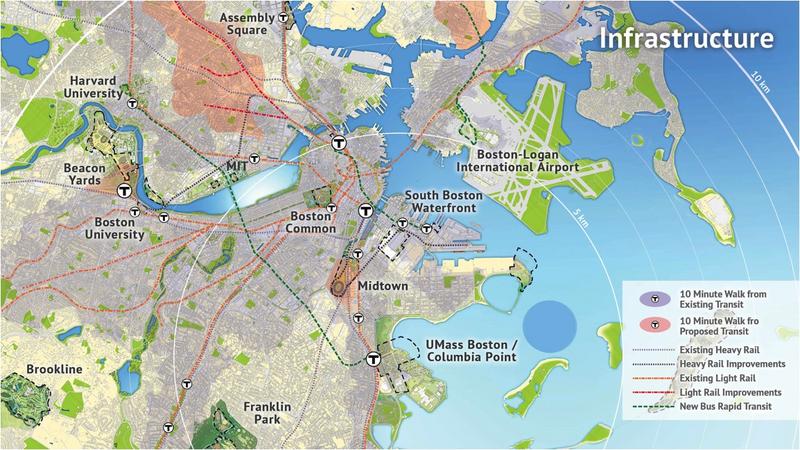TrainManTy wrote:Gerry6309 wrote:Even in the world of commuter rail, there are very few lines which could withstand much of an increase in service. Many are stymied by key sections of single track. Lowell, Fitchburg and Beverly on the North Side and Providence and possibly Framingham on the south side. Everything else has a bottleneck.
Framingham is currently bottlenecked by the single track through Beacon Park Yard. I would hope that's double-tracked by 2024, though... Worcester will need another station track (there's only one, and it sees almost constant use during rush hour).
Framingham is bottlenecked by the lack of crossovers. It's not the Beacon Park single-iron. No passing opportunities whatsoever between the west end of Beacon Park and Wellesley Farms, and between Wellesley Farms and Framingham. And that's a big limiter when some service makes the Newton stops and some doesn't. The margin-for-error for passing opportunities at those two locations is way too small, and that becomes the noose that affects the whole line. Especially when something's late...there's little resiliency to keep that delay from cascading. Unfortunately when Boston-Framingham was resignaled in the 1960's for the Pike extension ROW realignment B&A installed the cheapest ABS system it could get away with, making dropping in new crossovers easier said than done. It's going to take a pricey rip-out/resignal to cab signals like the Framingham-Albany part of the line to get the line up to its 'natural' service density.
The ABS vs. cab signal halves also present a minor issue with speed differential in addition to the flexibility differential with the crossovers. Framingham-Worcester can--and will--be bumped from Class 3 (59 MPH MAS) to Class 4 (79 MPH MAS) when the T finishes bumping the maintenance standards from the lower standard CSX kept it (crosstie, switches, the stuff that was inducing the annual summer heat restrictions). But you're capped at 59 on the inner half until that signal system gets replaced, which means the more flexible outer half of the line is going to leave a lot of unused capacity on the table.
The Eastern Route definitely has bottlenecks:
1) the Chelsea grade crossings and 30 MPH speed limit into Revere. Eastern Ave. grade separation was a top rec in the 2004 North Shore Transit Improvements study. They haven't so much as spoken of that one since. And Silver Line Gateway isn't eliminating Everett Ave., one of the most congested crossings on the system for traffic backups and one of the most dangerous for cars getting caught as the gates come down. And they're now going to be driving buses every 15 minutes with those gates down? That is going to be a debacle; they will rue cheaping out on that decision. They need to whack those two speed-limiter crossings, and outright close the superfluous 3rd St. crossing (which is only open because Peter Pan Bus would piss and moan about losing the shortcut out of its storage yard). Then the track speed can go to 60 through the remaining 3 crossings of least-concern and rack up some noticeable schedule savings and schedule resiliency past (to-be-relocated) Chelsea stations. This is huge. And not ghastly expensive either.
2) Mystic Jct and the single-track split on the
Western Route. You can only pack density so full on the 2-track Eastern Route side without starting to pinch existing Haverhill/Reading trains. Some earthen fill (not much) needs to be moved around to bring the WR's 2nd passing track contiguous to the junction and make it an orderly split between the two routes. You'd basically have a new "outbound" Haverhill/Reading track superelevated a couple feet higher than the existing "inbound" track. Do that and traffic-mixing at the junction doesn't require high-frequency Eastern Route service to give as much padding to wave through a more-constricted Western Route schedule through the junction.
3) If you really want maximum service levels to Beverly you're going to have to double-up the Salem platform so there's facing outbound + inbound sides. The single-track tunnel is no constraint whatsoever so long as there are unimpeded track splits at either end. And that means an un-fouled Salem platform that can take outbounds + inbounds at the same time, and simply pause a couple extra seconds while an opposing train clears the tunnel. Why didn't they do this with the boondoggle station renovation? Because the parking fairy. Short-sighted. Of course, if you traded Beverly for Peabody Sq. then the turnout track and that Salem platform (which the renovations leave space for) do the trick. But you're really going to need all worlds to satiate North Shore demand. Newburyport/Rockport need more trains too in addition to heavier inside-128 service.
This is why I give the Lynn DMU dinky almost zero chance of making the cut. The T proposes addressing NONE of these constraints. Not even #1, which dwarfs all others by an order of magnitude as a headway limiter.
